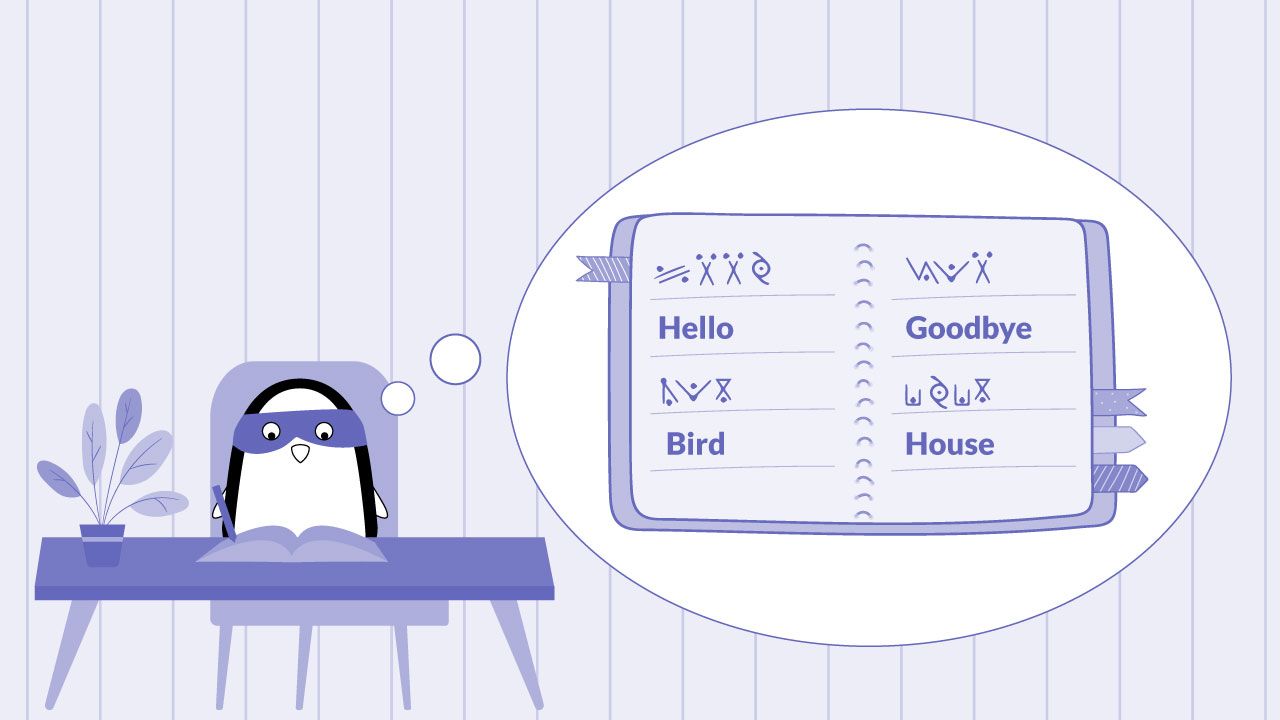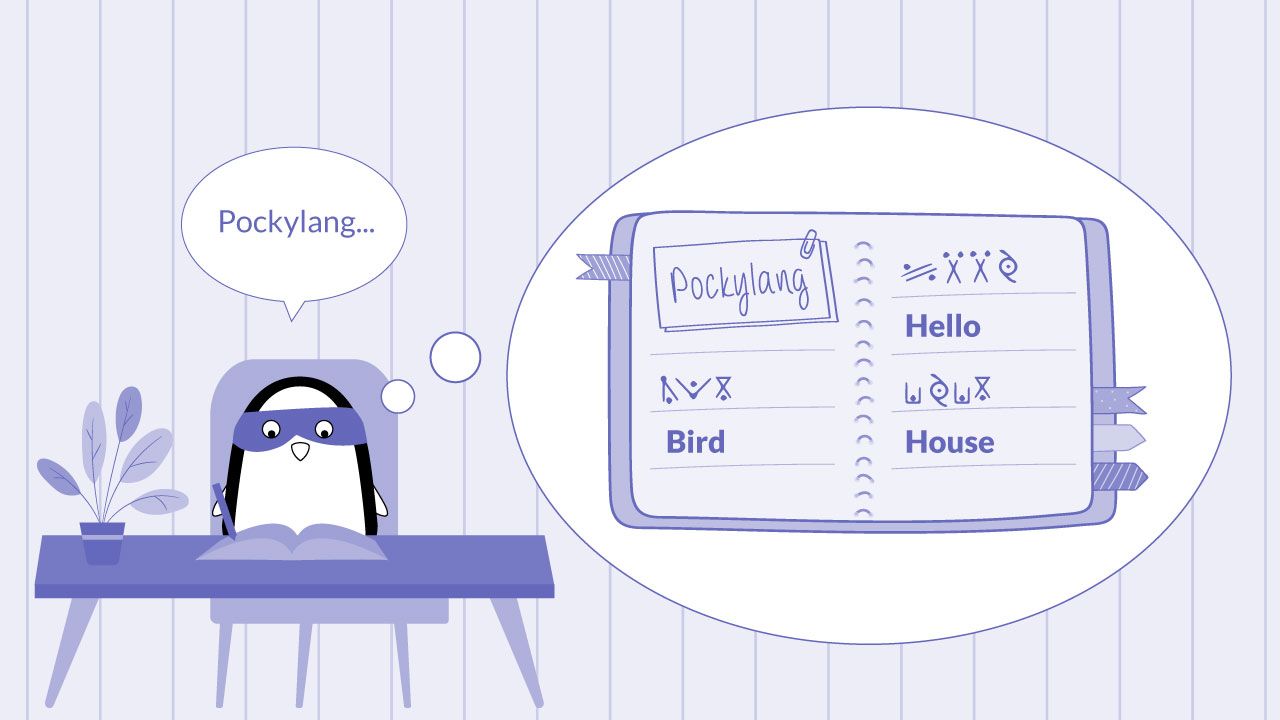
Creating your own language can be a fun and rewarding experience. It allows you to express yourself in a unique way, and it can also be a great tool for learning more about language structure and grammar in general.
In order to create a new language, you'll need to come up with a system for its grammar, vocabulary, and pronunciation. And, to do all that, it’s a great idea to base your language on other existing ones. In the article below, we’ll show you how to do that in six simple steps.
So, read on, and learn how to make a language. Once you have all of the basics worked out, you're ready to start speaking your new tongue!
Learn French with Langster
Natural Languages vs. Constructed Languages
There are three kinds of languages in the world: natural languages, formal languages, and constructed languages. Natural languages are ones that developed naturally over the course of human history, like English, Spanish, and Japanese.
Formal languages are ones that have been consciously created by someone for use in logic, mathematics, computer science, or linguistics – like the programming languages used in computer code.
Constructed languages, or conlangs for short, fall somewhere between natural and formal languages. They were not developed naturally over time, but they also don’t follow any strict rules like programming languages do.
Instead, they're typically designed by one or more people to fit specific needs or goals. They are often used for worldbuilding purposes in works of fiction.
While creating a constructed language can be a fun project on its own, many conlang creators also use their new language for some practical purpose. This could include using it as an international auxiliary language – a language meant to be used as a universal second language that everyone can learn, like interlingua or esperanto.
Examples of Artificial Languages
Artificial languages come in all shapes and sizes, and serve all sorts of different purposes. Here are a few examples:
Klingon language

This artificial language was created for use in the "Star Trek" TV series. It's spoken by an alien race called the Klingons and is designed to sound unnatural to the human ear.
Many Star Trek fans learn to speak Klingon, but since its vocabulary is heavily centered around the sci-fi setting, it’s not very convenient in everyday use.
Na’vi language
This fictional language was created for use in the 2009 film "Avatar." Like Klingon, it was designed with a specific purpose in mind – to sound strange and alien.
In reality, Na’vi is actually based on the sounds of Navajo and other Native American languages. It was created by linguist Paul Frommer as part of his job at the University of Southern California.
Game of Thrones Languages
As a fantasy epic, the "Game of Thrones" book series and TV show include a range of fictional languages. Two of the most famous of these are Dothraki and High Valyrian, created by linguist David J. Peterson for the TV series.
Peterson drew inspiration for both of his conlangs from existing languages, such as Latin, Estonian, Inuktitut, and Turkish.
Middle Earth Languages
The "Lord of the Rings" book series is another famous example of a world where fictional languages are used to create a sense of otherness and immersion. And, their creator, J.R.R.Tolkien, has put great effort into the process.
Tolkien began creating languages when he was a teenager, and he continued until late in life. Some of these languages were later adapted into the fictional ones used in Middle Earth, such as different Elvish languages.
Get Started
You can make your language more complex or simple, but it is always a rewarding experience. Fortunately, you don't have to start from scratch – you can adopt words and grammar structures from other languages (for example, French). But, for the best results, it’s important to understand how the existing language that you’re using functions.
Determine the reason you want to create the language and what it will be used for. For example, naming languages are used primarily for short phrases like character names or places in a book.
A naming language doesn’t have complex grammar or syntax, but should fit well if you are developing a simple fictional language for your book or series. However, you'll need to dive deeper into the structure of that language if you want to use it in conversation with someone or if you really want to elaborate the worldbuilding process.
Once you’ve decided what kind of language you want to create, it's time to start working on it. Here are six steps that should help you with that.
Step 1: Work On the Sounds
One of the most important parts of a language is pronunciation. When it comes to creating your language, you'll need to think about how its words are supposed to sound.
Start by choosing sounds that sound natural and have an appropriate rhythm for the type of language you’re creating. This could be drawn from existing languages, like Latin or German, or completely unique choices.
To make the process easier, you can use the International Phonetic Alphabet (check their website) to come up with new sounds. Finally, remember to write down all the sounds, so you can remember them when building your language.
Step 2: Create a Writing System

Now that you have a start to the spoken language, it’s time to create the writing system of your language – draw your own letters to represent the sounds you’ve made up. To create your own alphabet and come up with the letters, use your native language as well as other existing languages.
Consider how you want your language to look on paper. For example, it can be a pictographic system like Chinese or Japanese. In that case, you also need to decide whether you want characters that are written horizontally or vertically, apart from creating the hieroglyphics.
If it's an alphabetic system like English or Spanish, you can base it on several existing alphabets, such as Latin, Cyrillic, Greek, or Georgian. In that case, you can also use the already existing letters or letter combinations and assign new sounds to them.
Step 3: Come Up with Basic Words
Now, you can think about some basic words that will later help you with the process of expanding your language. Start with a list of a few words, such as nouns, verbs, and conjunctions – the basics. Further on, you can create compound words based on these root words (see how such words are used in German).
Make sure that your language choices make sense for the type of culture and world you’ve created.
For example, if you're creating a low-tech society based in a tropical climate, think about what kind of animals and plants they would have around them on a daily basis, and try to figure out what characteristics their language would have as a result of this environment. Maybe it will resemble a birdsong?
Remember to keep notes of all the words you’ve created. You can create your own dictionary, and fill it in as you go.

Step 4: Build Consistent Grammar Rules and Discover How Sentences Are Built
Now that you have a list of words, it’s time to start building the grammar rules of your language. This is often one of the most difficult parts, because it involves describing the patterns that govern how your language works.
Start by figuring out what kind of sentence structures are possible in this language and what they look like. Some languages, such as English or French, generally use a Subject-Object-Verb order for their sentences. However, other languages like Polish or Russian don't follow these kinds of rules – here, verbs can be put in many different places within a sentence.
Next, think how tenses work in your language: do you need markers for past, present, and future? What about the point in time within a sentence? You can also choose whether you want your language to imply or not imply its action going on at the moment of speaking (as in English: "I am running" but "I run").
Think about how nouns and articles work: do they have genders? Do they need to be pluralized?
Above all, keep these rules consistent. Write them down to remember them later on. But, feel free to add exceptions and rule-breakers – this will help your language look more natural.
Step 5: Give Your Language a Name
Now, think of a name for your new language – this will be the official term you'll use to refer to it. It can be based on its country of origin, like French or Swahili; your own name for it, like Esperanto; or something completely random, like Klingon from Star Trek.
Remember that naming languages can be fun: take your time and enjoy the process! And, don’t limit yourself: if you want to create two parallel versions of the same language with different names – go ahead.

Step 6: Practice Your New Language
The final step to creating your own language is to actually use it! You can start by writing simple sentences or dialogues, and then read them out loud and listen to how they sound. This will help you identify any possible problems with pronunciation and rhythms of the new language.
An easy way to practice speaking without an actual conversation partner is to create a diary in your new language and write articles about topics that interest you. This way, you'll be able to not only practice the grammar rules, but also create more vocabulary words.
And, don't forget that creating a new language, just like learning one, requires time and effort. Stay patient and keep practicing for as long as it takes until you feel comfortable using your new tongue.
Bottom Line
Creating your own language can be an enjoyable and rewarding experience, and it's not as difficult as you might think! All you need is some creativity, patience, and a willingness to learn.
In this article, we've outlined the basics of how to create a language – from coming up with vocabulary words to building grammar rules. So, why not give it a try now? The sky's the limit when it comes to what you can create – go and have fun with it!









